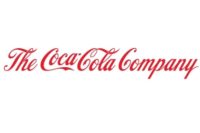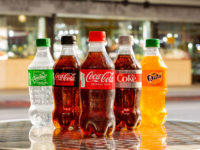With a company history that spans more than 90 years, The Double Cola Co. has a lot from which to pull influence. But the Chattanooga, Tenn.-based company isn’t resting on its laurels. Instead, it continues to give its established brands a contemporary touch and is now making its first push beyond the carbonated soft drink (CSD) market, which has been its sole focus until recently.
| Jump to: |
“Today, we’re taking a 360-degree approach to developing all areas of the company, both internally and externally, from administration, to sales and marketing, to [research and development],” says Gina McCommon, vice president of The Double Cola Co. “We’ve also made a concerted effort to be more responsive to the needs of our customers, both proactively and reactively, which has helped us to continue to grow over the last many years.
“We’ve also placed additional focus on international growth for the company and have worked extensively on developing new markets and new brands for the international arena,” she continues.
Part of that customer response is its announcement earlier this year that the company will launch three new brands: Quad Energy, Minōku Coconut Water and Zili Tea.
“The move is consistent with our long-term objective of providing a broader range of profitable products for our bottlers and distributors so we can grow collectively,” McCommon says. “In some cases, our distributors have been asking for these drinks, and in some instances, these will allow us to enter into agreements with new distributors and ultimately enter into new markets. We see real opportunities with our new products, and our distributors are eager to add new age beverages in many markets.”
Launched last month, Quad Energy is available in five flavors: Re-Charge, Low Carb Kick, Berry Fusion, Lime Craze and Orange Twist. Re-Charge and Low Carb Kick incorporate a traditional energy drink fantasy fruit flavor, while the other varieties feature flavors designed to appeal to the brand’s target market of males between the ages of 18 and 34, McCommon explains. Berry Fusion has a bold, tart mixed berry flavor; Lime Craze features a lime sherbet flavor; and Orange Twist is infused with orange flavor and a hint of tangerine, she adds.
Available in 16-ounce cans, Quad Energy has a suggested retail price of $0.99 and was designed to offer consumers a high-quality energy drink at an affordable price point, McCommon says.
“Quad Energy offers consumers an attractive alternative to high-priced energy drinks, while providing the superior quality consumers have come to expect from The Double Cola Co.,” she adds. “The unique flavors of Quad Energy are an added benefit to the functional energy drink [market]. Consumers can enjoy the energy drink without experiencing a prominent vitamin taste.”
Although relatively new to the market, Quad Energy already has generated complimentary feedback from producers, distributors, retailers and consumers, and it has exceeded sales expectations, McCommon notes. “We frequently hear positive remarks on the graphics and flavor,” she says. “People seem to like Quad Energy for the simple, bold brand name and graphics. They also remark how impressive the flavors are for an energy drink. We have great expectations for Quad, as do our customers.”
“Quad Energy offers consumers an attractive alternative to high-priced energy drinks, while providing the superior quality consumers have come to expect from The Double Cola Co." |
For its coconut water venture, The Double Cola Co. plans to launch Minōku Coconut Water this month in 350- and 520-ml cans with later plans to add Tetra Pak packaging, McCommon explains. “The outstanding, unordinary graphics of Minōku are sure to stand out on shelves stocked with coconut water competitors,” she says. “The positive feedback we’ve received from the graphics alone is pretty astounding.”
The brand sources its coconuts from Thailand, which produces sweeter coconuts compared with those from areas where the soil might produce saltier flavored coconut water, McCommon says.
“We feel certain that Minōku Coconut Water will be a welcomed product into the market,” she says. “It is a unique change to the cookie cutter coconut waters out in the market already, and based on our extensive focus group studies, consumers agree and actually prefer Minōku’s sweeter taste. We’re amazed at the positive comments we receive from some of our distributors who ‘don’t like coconut water.’
“It’s funny to see their reactions to Minōku,” she continues. “In many cases, they go from not liking coconut water to drinking an entire 520-ml can of Minōku and asking for more. It creates a really good feeling to know you’ve created a believer out of someone who thought he didn’t like the taste of coconut water.”
The Double Cola Co. also will tap into the ready-to-drink (RTD) tea market this month with Zili Tea. Available in five flavors — Sweet Tea, Apple Honey Green Tea, Citrus Ginger Green Tea, Plum Acai Black Tea and Valencia Orange Clove Black Tea — all varieties contain 25 percent of the recommended daily intake of B vitamins and are sweetened with a combination of granulated sugar and stevia.
“[Zili] taps into both the growing market for fortified and/or functional drinks and tea,” McCommon says. “Global market research from Mintel International last year forecast that tea sales at the foodservice level should grow 5 percent a year, and, if trends continue, tea could one day surpass coffee in North America sales. We wanted to get into tea and into the functional beverage category, so we thought it was a good idea to merge those together into a new drink, which we think has great taste and will appeal to a lot of new customers for us.”
The 100 percent natural tea contains no artificial colors or sweeteners, is free of genetically modified organisms, gluten, cholesterol and fat, and is low in sodium. Zili originally will be packaged in 16-ounce glass bottles, but the company also is working on a polyethylene terephthalate (PET) package and has plans to launch proprietary packaging in 2014, McCommon says.
Marketing for the three new brands will focus on consumer sampling. “For us, there’s nothing more important and impactful than getting the product in consumers’ and distributors’ hands,” McCommon explains. “Outside of that, we plan on placing emphasis on print media, in-store advertising and promotions, events, sponsorships and guerilla marketing. We’re continually working on new plans for expanding and growing the brands, so you never know what is around the corner when it comes to marketing.”
For distribution, the company will use a three-pronged approach for the new brands, such as distribution through current distributors, distribution via new partnerships, and a direct-to-retail approach depending on the territory, McCommon says. Available in mass merchandisers, grocery retailers, convenience stores and more, the new brands will initially be distributed on the East Coast in areas including Florida, the Carolinas, New York and Pennsylvania, she adds. The company also has plans for the Southern region states including Texas, Louisiana, Alabama, Georgia, Mississippi, Arkansas and Tennessee as well as the West Coast in 2014.
Core category
Although The Double Cola Co. is excited about the launches of Quad, Minōku and Zili, the company has not overlooked its CSD brands.
“Despite the reported industry-wide declines in CSD sales, our company has been fortunate to buck the trend, and, in fact, we have continued to grow over the last several years,” McCommon says. “With that said, we are cautiously optimistic about the future of our CSD portfolio and plan to continue to invest in the core brands our company was founded upon.”
Last year, the company’s flagship brand, Double-Cola underwent packaging changes including new graphics and branding.
“We wanted the graphics and the branding to match the personality of the brand — a little out of the ordinary, friendly, hand-crafted and different from other big-name colas,” McCommon says. “The graphic elements were each chosen to tell the story of Double. Our interlocking rings symbolize Double’s perfect balance of carbonation and sweetness. The Double-Cola blue was chosen because it was different. In a sea of sameness, this unique color was one way of carving our space.
“The typography was chosen to be clean and modern with supporting hand-drawn text and illustrations to reflect Double’s unique personality,” she continues. “We’re handcrafted and proud of it. The illustrations were hand drawn to add playful elements that keep the brand fresh and unexpected.”
For its Diet Double-Cola, which was reintroduced in October 2012, the company enlisted a similar approach. Designed to reach a growing market of youthful CSD consumers, Diet Double-Cola now features the tagline “Surprisingly Diet” on its packaging to attract consumers who typically do not consume diet beverages because of the stereotypes that diet drinks have received in the past, the company says. The packaging also features hand-drawn designs. The brand also now is formulated with a blend of aspartame and acesulfame potassium in order to taste more like regular Double-Cola, McCommon says.
Although the company does receive consumer requests about adding flavors to the Double-Cola line, it feels its greatest opportunity lies within the rebranding it began a couple of years ago, McCommon notes.
“We’ve focused on a new target audience for Double-Cola — a more youthful crowd,” she says. “Generation Y is not so familiar with Double-Cola, and we’d like to continue focusing marketing efforts on increasing brand awareness and trial for this crowd. Getting young adults to try Double is key to growing the brand, because once they try it, they’re usually convinced to have another one in the future.”
But even with this focus, the company wouldn’t rule anything out. Instead, it’s continuously experimenting with new flavors, sweeteners and ingredients, McCommon adds.
Tapping into consumers’ desires for flavors, the company offers its Ski brand family, which is made with real fruit juices and is available in Ski Citrus Soda, Diet Ski, InfraRed and the recent reintroduction of Caffeine Free Ski.
“There is a little something for everyone within the Ski family of brands,” McCommon says. “While most Ski consumers grab regular Ski off the shelves, many Ski consumers are thrilled to find the other brands. Ski InfraRed, formally known as Cherry Ski, adds the spice of variety. It is also a competitive replacement for other cherry-flavored citrus brands.
“Diet Ski is sweetened with Splenda and is so close in taste to regular Ski that Ski fans can enjoy the real fruit citrus flavor of Ski but without all the sugar and calories,” she continues. “Caffeine Free Ski is a huge treat to Ski fans who started with regular Ski and got hooked but now need or require a caffeine-free or caffeine-free diet alternative.”
Adding new packages to the line, the company recently released Ski in 16-ounce cans and 20-pack cartons for the Ski lineup, McCommon notes. It also is looking into adding additional flavors to its 16.9-ounce multipacks.
“We think we have a real gem with Ski,” McCommon explains. “We are able to compete very effectively in many of the markets where we have a presence, and we constantly receive enthusiastic feedback from our Ski fans. They’re a very passionate group of individuals and fanatical about the brand, including sharing their love for the brand with the world. Our biggest focus for Ski is to continue to gain distribution in new markets [that] are contiguous to our core Ski markets and to emphasize sampling to gain trial.”
The company most recently hosted a sampling tour that featured both Double-Cola and Ski varieties. The Road to Refresh was a two-week regional sampling tour in July that took place at supermarkets, convenience stores and popular community spaces across six markets in northeast Tennessee, central Kentucky, western Kentucky, southern Ohio, southern Indiana and St. Louis metro. Supported by in-store advertising, word of mouth and social media, the event was created to increase brand awareness and trial of the Double-Cola and Ski Citrus Soda brands in new and developing markets, the company says.
Adding variety
Beyond its non-CSD brands, The Double Cola Co. also has growth vehicles from its other established CSD brands. In 2010, the company reintroduced Chaser, a lemon-lime soda that is one of its top sellers in international markets, it says.
“Introducing Chaser in the U.S. was a natural fit when we considered its success overseas and the void some of our distributors had when competing in the lemon-lime category here in the U.S.,” McCommon says. “In the limited area where Chaser has been introduced, the sales have been consistent with our expectations.”
The brand will receive a rebrand and update to its graphics to fit the U.S. market, and the company has plans to extend the Chaser product line, she adds.
Originally only available outside of the United States, The Double Cola Co.’s Oranta naturally flavored orange soda will launch in the United States within the next couple of years, McCommon notes. “Before we bring Oranta to the U.S. market, the brand will undergo a thorough rebrand including updated packaging, graphics and branding,” she says. “There is also discussion about ‘altering’ the product to make it a unique product in the U.S.”
Also undergoing a number of expansions over the years, The Double Cola Co.’s Jumbo brand has been around since the company’s inception. “In the 1920s, the company started as the Good Grape Co. with our grape flavor as its main product,” McCommon says. “Today, Jumbo takes on a different role in the company.”
Jumbo allows the company to offer a high-quality product at a good value for consumers, and the numerous flavors allow distributors to offer their customers a broader product portfolio, she notes.
“Jumbo has helped us gain additional space in convenience stores especially,” McCommon says. “Having so many flavors in a variety of packages is a real advantage for our distributors. In some markets, the sheer number of flavors and unique packaging has helped open a lot of doors for distributors to help gain shelf space and incremental product placement. Jumbo has also helped 2-liter space in Double-Cola markets as well as new fans who prefer classic flavored sodas.”
Jumbo is available in Orange, Grape, Strawberry, Peach, Fruit Punch, Watermelon, Strawberry-Kiwi, Green Apple, Pineapple and Root Beer flavors. The company recently added Jumbo Peach to its 2-liter lineup at the request of distributors in Georgia, “the peach state,” and also is working on some berry-type flavors for the brand. It also plans to expand the brand beyond other beverage categories, McCommon says. Plans for this launch are set for 2014, she adds.
Whether it’s The Double Cola Co.’s CSD offerings or its entry into new categories, the company is looking forward to more opportunities for sustainable growth.
“We feel the possibilities are endless,” McCommon says. “We have a great group of committed distributors that we continue to build upon, a wide range of high-quality products that we’re continuously adding to, and a dedicated team of employees driving the company forward. We feel that we are on solid footing for long-term sustainable growth, and we’re really looking forward to the future with a great deal of anticipation and excitement.”
The Double Cola Co. has an intertwining mindset
On the heels of its first venture outside of the carbonated soft drink (CSD) market, The Double Cola Co. has numerous plans in place for the marketing and distribution of its three new brands: Quad Energy, Minōku Coconut Water and Zili Tea. However, the Chattanooga, Tenn.-based company also can pull influence from its 90-plus history in the CSD market.
Fortunate to have experienced growth when the overall CSD market has faced contraction, The Double Cola Co. is seeing positive results from its growing network of distributors, says Gina McCommon, vice president of The Double Cola Co.
“Foremost, our marketing strategy for continued growth is new market penetration through adding to our existing distributor network,” she says. “We are able to attract high-caliber distributors by offering a broad, profitable product portfolio, exceptional customer service, and the marketing support to grow the brands. This is one area where being a smaller company has its benefits. We’re much more nimble and able to make decisions quickly, which is very unusual in today’s market. Our distributors really appreciate that.”
With its core brands available in several states across the United States — including Alaska — the brands are distributed primarily east of the Mississippi. However, the company has been growing its distributor network during the last several years, including the Double-Cola brand obtaining nationwide distribution at Cracker Barrel Country Stores. The company also has plans to expand in the coming years.
“We just added distribution in Central Illinois, North Georgia, and we plan to expand in the Midwest and Mid-Atlantic in addition to the East Coast,” McCommon says. “Our sales team is constantly on the search for new, qualified distributors, and we expect that we will double our distribution base in the next two years.”
These distributor relationships — as well as its retailer and consumer relationships — also play a key role in the company’s marketing strategies. “We employ a variety of other marketing tools targeted toward distributors, retailers and consumers,” McCommon explains.
Consumer loyalty programs, social media, traditional advertising, discount and coupon promotions, point-of-sales materials as well as distributor incentives are among the marketing strategies the company has employed, she adds. However, the company understands the importance of both a national and a local approach.
“While we have brand-specific promotions that run across all distributors in our network, we also place a great deal of importance on market-specific planning and programs to make sure that we are able to meet the needs of the local market and stay relevant in the minds of local consumers,” McCommon says. “We’ve been very successful in creating local connections with consumers, sometimes to the point that consumers think the brands were actually started in their hometowns.”








